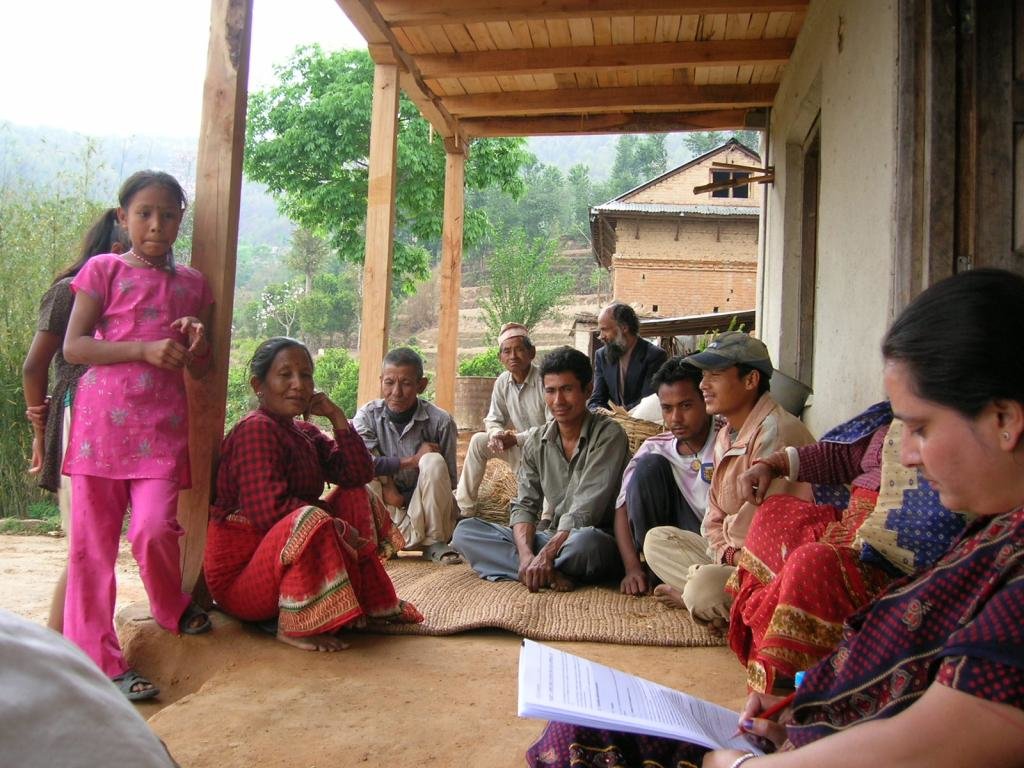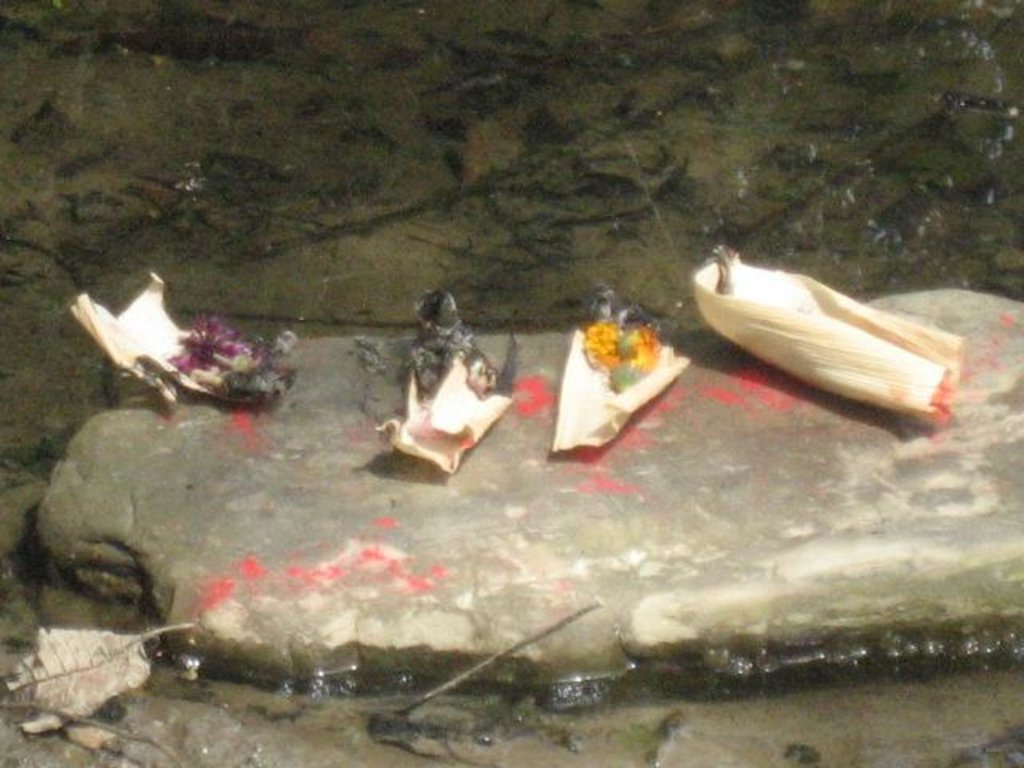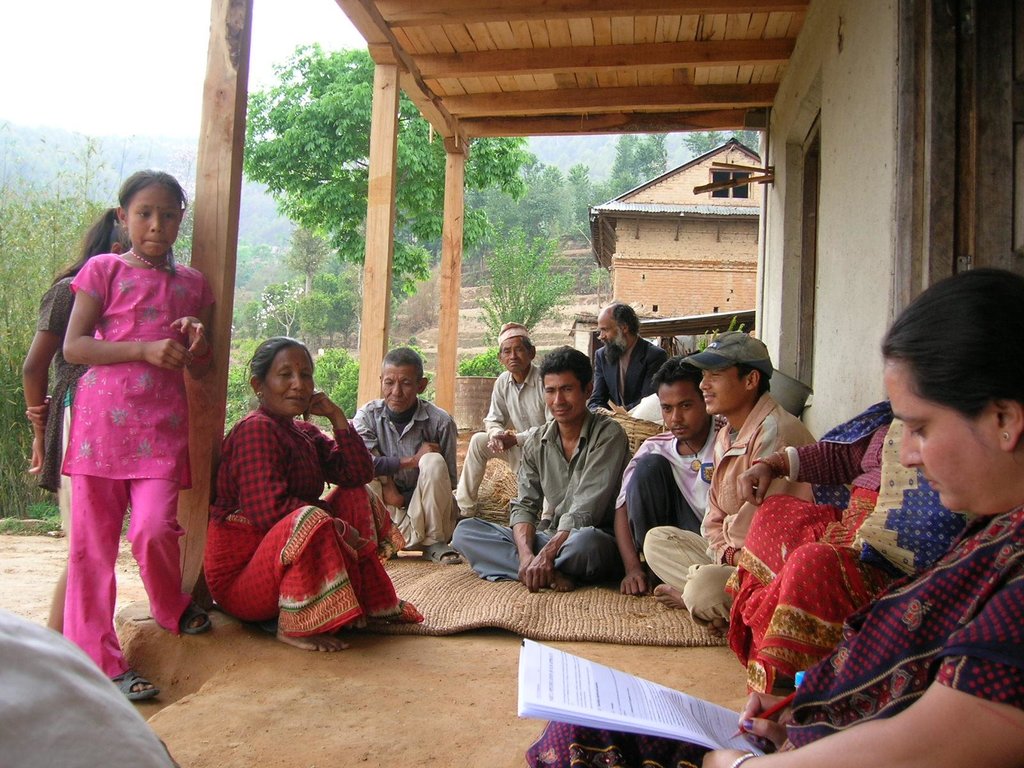Trans-generational approach for the protection of gully [尼泊尔]
- 创建:
- 更新:
- 编制者: Sabita Aryal
- 编辑者: –
- 审查者: Fabian Ottiger
Samudaik Kholsa Sanrakshan
approaches_2669 - 尼泊尔
查看章节
全部展开 全部收起1. 一般信息
1.2 参与方法评估和文件编制的资源人员和机构的联系方式
有助于对方法进行记录/评估的机构名称(如相关)
Kathmandu University (KU) - 尼泊尔有助于对方法进行记录/评估的机构名称(如相关)
Sarada Batase Village Development Committee (Sarada Batase VDC) - 尼泊尔1.3 关于使用通过WOCAT记录的数据的条件
编制者和关键资源人员接受有关使用通过WOCAT记录数据的条件。:
是
2. SLM方法的描述
2.1 该方法的简要说明
The gully protection activities were initiationed and maintained by local people by using local materials based on their indigenous knowledge which supports to achieve more sustainable soil and water management.
2.2 该方法的详细说明
该方法的详细说明:
Aims / objectives: The aim of the approach is to reduce gully formation, protect the fertile agricultural land and minimise the effect of slipping down of the village.
Methods: Individual farm ownner along the side of the gully take the first responsibility of the maintannce. The Jagidol village community and the Newari Guthi of the region, and all Hindus who worship for the Nagdevata and Shiva devata along the stream bank take extra care and consiousness on gully protection. It is a collective efforts through social networks.
Stages of implementation: Ever on going. Basically individual initiation. If the problem is bigger in Community gathering and discussion takes place for planning of necessary activities. Material will be collected locally. Hands of implementation is called from the local area. This approach has been continued for over 200 years.
Role of stakeholders: The land wonner along the stream bank have major role, if the situation becomes terrific then only other give hands. Men are more active for the land protection during crisis such as flood, but in regular upkeeping and maintainance women are more active.
Other important information: Gully is much more in control in the upper region where the bioengeenering approache is applied; there it is more stable and mature. In the lower belt of the gullies it still is under the need of regular maintanace.
2.3 该方法的照片
2.5 采用该方法的国家/地区/地点
国家:
尼泊尔
区域/州/省:
Nepal
有关地点的进一步说明:
Kavre
2.7 方法的类型
- 传统/本土
2.8 该方法的主要目的/目标
The Approach focused mainly on other activities than SLM (Activities of religious, cultural and biological importance)
To protect agains gully formation. To protect under the soil loss. To protect the land from flood. Protection of source of water for dry season. To prevent landslides. To prevent the slidding of the hill towards the gully. To improve the well being of the farm and farmer.
The SLM Approach addressed the following problems: Lack of institutional development. The group is not registered anywhere in a conservation team or organisation. Thus getting no technical and financial support from government or non-governmental organisations. The research done by the community is not documented, it is trasmitted by mouth to mouth. To manage the gully labour shortage in the village is a rwal constraint.
2.9 推动或妨碍实施本办法所适用的技术的条件
社会/文化/宗教规范和价值观
- 阻碍
situation of the temple nearby the gully and worship place for 'Nag devta'( snake God)
Treatment through the SLM Approach: mutual discussion and decision
财务资源和服务的可用性/可得性
- 阻碍
to buy implementation tools
Treatment through the SLM Approach: use of local material, call for kind donations within the community and if possible, cash from the community
机构设置
- 阻碍
no linking of the act with the organisation
Treatment through the SLM Approach: self management
法律框架(土地使用权、土地和水使用权)
- 启动
The existing land ownership, land use rights / water rights greatly helped the approach implementation: The land in the gully side is owned by individual farmers. The water resource available next to the farm is also used by the individual farmer. Thus the managing of the gully, stopping further erosion etc. is also in responsibility of the owners. If a problem increases at a certain site of an individual farmer, this means his land will be more affected than others, he takes the initiative for getting help from availabe sources of the village community
- 阻碍
land owner is the most responsible
Treatment through the SLM Approach: the land owner is convined by other villagers to maintain the gully near by his plot
了解SLM,获得技术支持
- 阻碍
no complete awarness of the conservation acts but continued as it is transmitted from generation to generation
Treatment through the SLM Approach: new methods and material are used by learning from other program or project implemented in the neighbourhood areas
工作量、人力资源可用性
- 阻碍
During the busy parts of the farming calendar there is little or no labour available for SLM projects.
Treatment through the SLM Approach: SLM projects are scheduled so that they coincide with periods of less farm labour stress, i.e. dry season.
其他
- 阻碍
Conservation measures generate more time during the busy farming period of monsoon
Treatment through the SLM Approach: extra hands will be called from the community
3. 相关利益相关者的参与和角色
3.1 该方法涉及的利益相关者及其职责
- 当地土地使用者/当地社区
The people who own the land near by the stream and the village as a whole. The land owners and elderly persons of the village
It is considered as a heavy work and therefore carried out by young men. Men are involved during the problem time. Women are regularly involved all around the year for the maintanance.
- 国家政府(规划者、决策者)
- 国际组织
- near by villager or practitioner
如果涉及多个利益相关者,请注明领导机构:
The old man and women in community take initiative to explain best methdos.Young men on the basis of their observation around the other similar problem and solution choose the option and implement. Women member maintain the gully during the farming time.
3.2 当地土地使用者/当地社区参与该方法的不同阶段
| 当地土地使用者/当地社区的参与 | 指定参与人员并描述活动 | |
|---|---|---|
| 启动/动机 | 自我动员 | The villagers realised that they needed to protect the land to increase the amount of available farming land and to protect their village from landslides. |
| 计划 | 自我动员 | The villagers plan various counter measures during the dry season, so that when the monsoon come their land would be protected |
| 实施 | 自我动员 | The land users implemented the protective measures using local materials . |
| 监测/评估 | 自我动员 | The build protective measure are maintained and repaired from time to time. |
| Research | 无 | no documentaion is made besides our study |
3.4 有关SLM技术选择的决策
具体说明谁有权决定选择要实施的技术:
- 仅限土地使用者(自主)
解释:
The land users have been implementing these technologies since many years. They have developed their own methods and selection of technology and material by trial and error. They have used intuitive reasoning for excellence.
Decisions on the method of implementing the SLM Technology were made by by land users* alone (self-initiative / bottom-up). by observing the best resulting methods and material. By learning from the nearby places where the technology is selected under the guidance of conservation specialists.
4. 技术支持、能力建设和知识管理
4.1 能力建设/培训
是否为土地使用者/其他利益相关者提供培训?:
是
培训形式:
- 在职
- 农民对农民
4.3 机构强化(组织发展)
是否通过这种方法建立或加强了机构?:
- 否
4.4 监测和评估
监测和评估是该方法的一部分吗?:
是
注释:
bio-physical aspects were regular monitored by land users through observations; indicators: No formal reporting was ever made, but evolution of the approach were continually observerd.
technical aspects were regular monitored by land users through observations; indicators: No formal reporting was ever made, but evolution of the approach were continually observerd.
Continuity of the approach aspects were regular monitored by land users through observations; indicators: No formal reporting was ever made, but evolution of the appraoch were continually observerd.
There were few changes in the Approach as a result of monitoring and evaluation: The insecurity factor of the land user is combined with religious aspects such as the development of temple
There were few changes in the Technology as a result of monitoring and evaluation: New and recent material and technology is emerging in the lower area were the practice is relatively young
5. 融资和外部物质支持
5.1 该方法中SLM组成部分的年度预算
如果不知道准确的年度预算,请给出一个范围:
- < 2,000
注释(例如主要的资助来源/主要捐助者):
Approach costs were met by the following donors: local community / land user(s) (There has been no external aid): 100.0%
5.2 为土地使用者提供财政/物质支援
土地使用者是否获得实施该技术的财政/物质支持?:
否
5.3 对特定投入的补贴(包括劳动力)
- 无
如果土地使用者的劳动力是一项重要的投入,那么是不是:
- 自愿
注释:
Full costs to land users
5.4 信用
是否根据SLM活动的方法给予信用值?:
否
6. 影响分析和结论性陈述
6.1 方法的影响
该方法是否帮助土地使用者实施和维护SLM技术?:
- 否
- 是,很少
- 是,中等
- 是,支持力度很大
Land slide and food shortages are reduced, soil loss is prevented. The sliding of the hill and community habitation is improving.
该方法是否有助于社会和经济弱势群体?:
- 否
- 是,很少
- 是,中等
- 是,支持力度很大
该方法是否改善了阻碍SLM技术实施的土地使用权/用户权问题?:
- 否
- 是,很少
- 是,中等
- 是,支持力度很大
Community action will be not taken unless the individual farmer takes his initiative to solve the problem. Since it is individual farm it is thought to be managed by the land owner particularly
Did other land users / projects adopt the Approach?
- 否
- 是,很少
- 是,中等
- 是,支持力度很大
Other farmers from neighbouring valleys have seen the SLM measures implemented in the gully and have adopted them in their own region.
Did the Approach lead to improved livelihoods / human well-being?
- 否
- 是,很少
- 是,中等
- 是,支持力度很大
With increase in water ans soil conservation, there is provided increased arable land for quality crop production, thus also improves health and well being in the valley
Did the Approach help to alleviate poverty?
- 否
- 是,很少
- 是,中等
- 是,支持力度很大
The production of the farm is now sufficient for more months then it was before. As a whole the village has benefited from the approach increasing the wealth of the village.
6.2 土地使用者实施SLM的主要动机
- 增加生产
Creating better soil conditions and water management for irrigation
- 增加利润(能力),提高成本效益比
With more farmland and water for irrigation more profits can be obtained.
- 环境意识
When the farmers cleared too much land they realised that they needed to implement SLM measures
- well-being and livelihoods improvement
With better drinking water the community's well-being improved.
- Risk minimisation
The risk of flooding and runoff of farm and soil, landslide is major threat to them.
6.3 方法活动的可持续性
土地使用者能否维持通过该方法实施的措施(无外部支持的情况下)?:
- 不确定
若否或不确定,请具体说明并予以注释:
The approach needs subsidies or external support to sustain it due to shortage of local labor volunteers. With funding support the village can purchase better materials to create longer lasting structures.
6.4 该方法的长处/优点
| 土地使用者眼中的长处/优势/机会 |
|---|
| Remarks and suggestion of nearby land users and community persons are taken into serious consideration (How to sustain/ enhance this strength: Learning of society to respect and regard others suggestion. Morale value) |
| 编制者或其他关键资源人员认为的长处/优势/机会 |
|---|
| Community network and individual farm ownership, self farming by land owner, most of the landowner reside at the same hill (How to sustain/ enhance this strength: Discourage migration of farming community to nearby city) |
6.5 该方法的弱点/缺点以及克服它们的方法
| 土地使用者认为的弱点/缺点/风险 | 如何克服它们? |
|---|---|
| Migration of farmer for better job. Commencement of new owner. Comming of a brick making factory instead of farming. | Government should give more rules for cultivable land. |
| 编制者或其他关键资源人员认为的弱点/缺点/风险 | 如何克服它们? |
|---|---|
| No proper and formal planning. No connection with authority and funding organisations | Formalisation of the group for conservation practices |
7. 参考和链接
7.1 方法/信息来源
- 实地考察、实地调查
- 与土地使用者的访谈
链接和模块
全部展开 全部收起链接
无链接
模块
无模块





